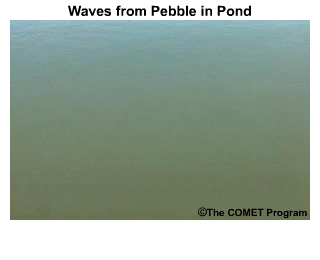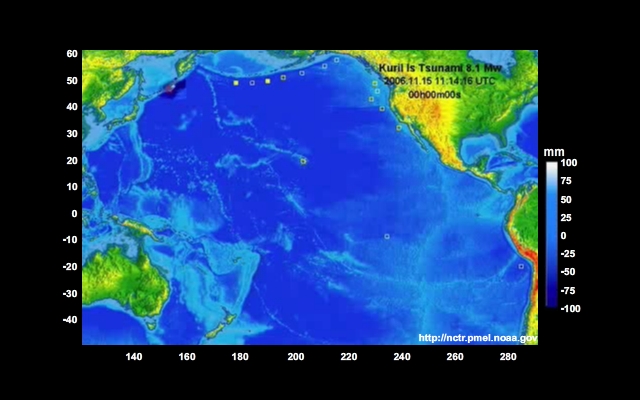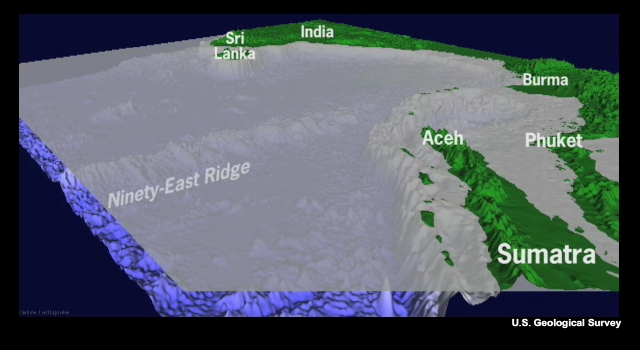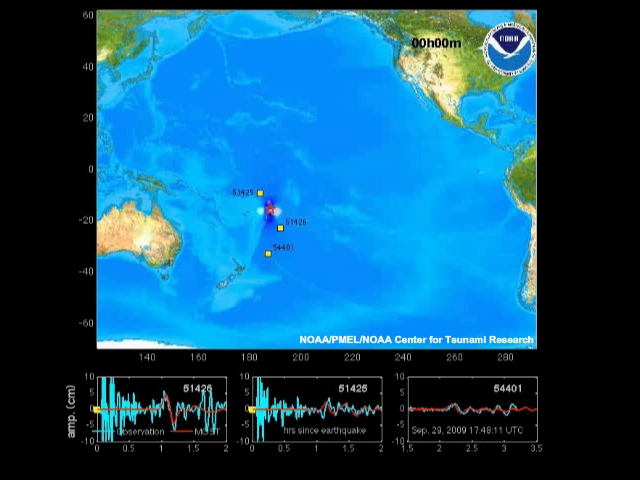Reflection
When tsunamis travel, they don't do so evenly like the ripples ringing a pebble tossed into a pond. For one thing, earthquakes that trigger tsunamis aren't rounded like pebbles.

They occur along faults that are often unevenly shaped or oblong, and the fault ruptures can be hundreds of kilometers long.
Also, the ocean is a much bigger and more complicated place than a pond.
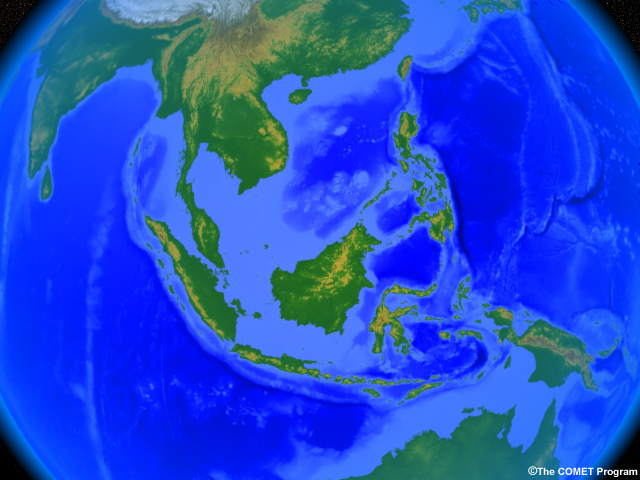
Over the distances tsunamis travel, the seafloor is uneven. And the basin is filled with obstacles that can steer, disrupt, speed up, or slow waves. These obstacles matter because a tsunami wave extends all the way to the ocean bottom.
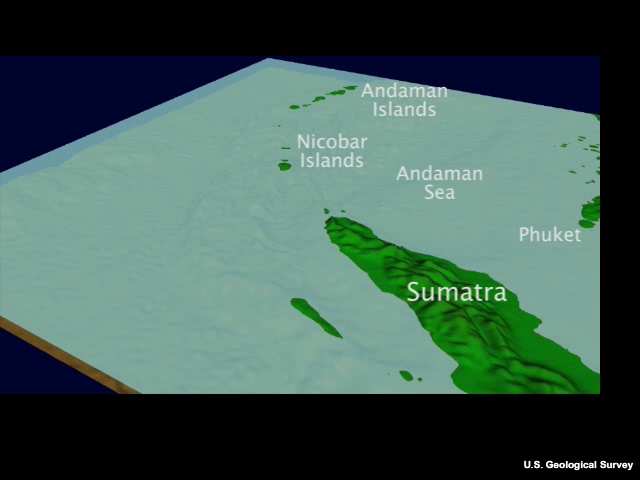
Animation of changes in sea level heights resulting from the December 2004 long-rupture earthquake off the coast of Sumatra.
Once in motion, a water wave can flow above, bounce off, or bend around terrain such as ridges, sea mounts, and coastlines.
Question
What do you think will happen when a tsunami wave runs into a long underwater ridge? (Choose the best answer.)
The correct answer is c).
If you thought the best answer was that the wave both bounces off and goes over the top, you're right. The bottom part of the wave will smack into the ridge and bounce off of it, while the top part of the wave moves over it. If the wave runs into an obstacle that extends above the ocean surface, like a very large island or the coast of a continent, some water will rush up onto shore, but some will also bounce off the island or continent edge.
This "bouncing off" is referred to as reflection.You can see that happening in this movie of a tsunami generated in the Kuril Islands of northeast Russia. The tsunami both bounces off and travels over the underwater Emperor Seamounts and Hawaiian Ridge.
The steep surfaces of the Maldives and Sri Lanka in the central Indian Ocean also make excellent reflectors, as you can see in this movie.
Here is another example—the 2009 Samoan Tsunami. Notice the many reflections off Pacific islands and off the coast of California.
